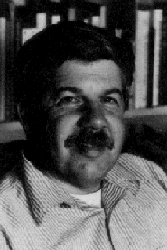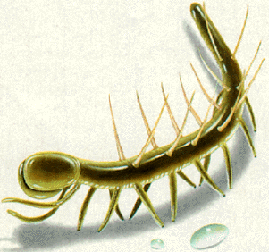Punctuated Equilibrium
Stephen Jay Gould popularized a revised understanding of the Burgess Shale fauna in his book Wonderful Life in 1989. He used the fauna as an example of "punctuated equilibrium", a model he and Niles Eldridge developed. In this view, evolution is a slow steady process most of the time, but it is punctuated by intervals during which evolutionary rates speed up for a short time.
Pictured at the left is hallucigenia, one of the "weird wonders" of the Burgess Shale. At first it was interpreted to have walked on the paired, spiney projections, having a single row of stumpy projections on its back, and the head and tail were reversed. A fossil of the animal found in Sweden showed there were pairs of stumpy legs. So the animal was turned right-side up, with a "normal" head and hind end and classified, like Aysheaia, as an Onychophoran, or velvet worm phylum--still pretty weird and wonderful, but an extant group.
Opabinia, with its five eyes and odd probiscus retained its status as a "weird wonder", without affinities to extant phyla.
Photo Jacket of Wonderful Life Image: painting by Kam Mak, National Geographic, October, 1993






